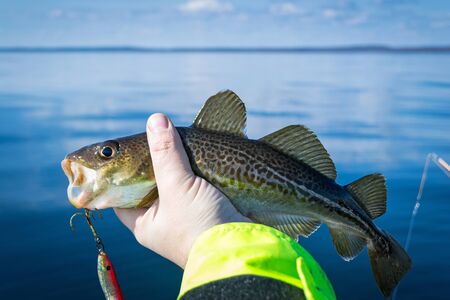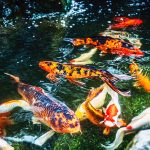Understanding Fly Fishing and Its Appeal
Fly fishing is more than just a way to catch fish — it’s a unique experience that blends skill, patience, and a deep connection with nature. Unlike traditional spin or bait fishing, fly fishing uses a lightweight lure called a “fly” and requires casting techniques that focus on the line rather than the lure’s weight. This creates an elegant, almost meditative rhythm that many anglers find addictive.
So, what makes fly fishing stand out in the world of angling? Let’s explore some key differences:
What Sets Fly Fishing Apart
| Aspect | Fly Fishing | Conventional Fishing |
|---|---|---|
| Casting Method | Line-based casting with rhythmic motion | Lure or bait-based casting with weighted tackle |
| Tackle Used | Lighter rods, specialized reels, floating or sinking lines | Heavier rods, spinning reels, monofilament or braided lines |
| Target Species | Trout, salmon, bass, panfish — often in streams and rivers | Wide variety — lakes, oceans, rivers depending on method |
| Fishing Style | More active and technique-focused | Can be passive (e.g., waiting for bites) |
The Cultural Connection in America
Fly fishing holds a special place in American outdoor culture. It’s often associated with scenic mountain streams, peaceful mornings on quiet rivers, and a sense of tradition passed down through generations. From the Rocky Mountains to the Appalachians, families have long shared time together while casting flies into crystal-clear waters.
This type of fishing appeals to those who enjoy not just catching fish but also the art and challenge behind it. For many Americans, fly fishing becomes a lifelong passion because it offers more than just results — it provides moments of solitude, skill-building, and connection to the natural world.
Why Beginners Are Drawn to It
- Simplicity at heart: While gear can get advanced, starting out can be very simple.
- A strong learning curve: Each outing offers new things to learn and try.
- The beauty of locations: Many fly fishing spots are in stunning outdoor settings.
- A peaceful experience: The slow pace and mindful casting make it relaxing.
If youre new to fishing or looking for something more immersive than traditional methods, fly fishing might be your perfect match. In the next section, we’ll break down the essential gear you need to get started.
2. Essential Fly Fishing Gear for Beginners
If youre new to fly fishing, it can feel overwhelming trying to figure out what gear you actually need. The good news? You don’t need to spend a fortune or buy every gadget on the shelf. Heres a simple breakdown of the must-have gear thatll get you on the water and casting with confidence.
Fly Rod
Your fly rod is your main tool. For most beginners, a 9-foot, 5-weight rod is a great all-around choice. It’s versatile enough for trout fishing in rivers and lakes, and easy to learn with.
Beginner Tip:
Look for medium-action rods—they offer a balance between flexibility and power, which is ideal when youre learning.
Fly Reel
The reel holds your line and helps balance the rod. While high-end reels offer advanced drag systems, beginner anglers can start with basic models that are affordable yet reliable.
Things to Look For:
- Large arbor design (helps retrieve line faster)
- Smooth drag system
- Lightweight but durable frame
Fly Line
Your fly line is what youll cast—not the fly itself. Fly lines come in different weights to match your rod, and for beginners, a weight-forward floating line (WF) is easiest to cast and works well in most freshwater conditions.
Leaders & Tippet
The leader connects your thick fly line to the small, nearly invisible tippet that ties directly to your fly. This setup helps present your fly naturally in the water without spooking fish.
| Component | Description | Beginner Tip |
|---|---|---|
| Leader | Tapered nylon line (7.5–9 ft) | Start with a 9 ft 4X leader for general trout fishing |
| Tippet | Add-on line that extends leader life | Match the size of your tippet (e.g., 4X) to your fly size |
Flies
This is where things get fun! Flies imitate insects or baitfish and come in three main types: dry flies (float), nymphs (sink), and streamers (imitate baitfish). Start with a small assortment based on local fish species and seasons.
A Good Starter Set Might Include:
- Adams Dry Fly (size 14–16)
- Pheasant Tail Nymph (size 14–16)
- Woolly Bugger Streamer (size 6–10)
A Quick Look: Beginner Fly Fishing Setup Checklist
| Gear Item | Recommended Type/Specs |
|---|---|
| Rod | 9 ft, 5 wt, medium action |
| Reel | Bargain model with smooth drag & large arbor |
| Line | Weight-forward floating line (WF5F) |
| Leader | Tapered, 9 ft, 4X nylon leader |
| Tippet | Nylon or fluorocarbon, matched to fly size (e.g., 4X) |
| Flies | Diversified set of dry flies, nymphs, streamers |
Simplify with Beginner Kits
If youd rather skip piecing together individual gear, look for beginner combo kits from trusted brands like Orvis, Redington, or Echo. These packages usually include a rod, reel pre-spooled with line, leader, and even a few flies—ready to hit the water right out of the box.

3. Getting to Know Your Flies
When it comes to fly fishing, your fly is your bait—and choosing the right one can make all the difference. There are many types of flies, but beginners should start by getting familiar with the three main categories: dry flies, nymphs, and streamers. Each type imitates a different stage or type of aquatic insect or prey, and knowing when to use each can help you catch more fish.
Dry Flies
Dry flies float on the water’s surface and mimic adult insects that trout love to snack on, like mayflies or caddisflies. These are perfect for when you see fish rising to the surface or during hatches (when insects emerge from the water in large numbers). Fishing with dry flies is exciting because you get to watch the fish strike!
Best Time to Use:
- During insect hatches
- When fish are visibly feeding on the surface
- In calmer water conditions
Nymphs
Nymphs sink below the surface and imitate immature insects that live underwater. Since most of a trout’s diet consists of these subsurface bugs, nymphs are often the most productive type of fly. They’re great when there’s no surface activity and you still want a solid chance at hooking a fish.
Best Time to Use:
- When no surface feeding is visible
- In colder weather or early season
- Any time—nymphing works year-round!
Streamers
Streamers represent larger prey like minnows, leeches, or crayfish. These flies are fished actively—you cast them out and retrieve them with movement to trigger predatory strikes from big fish like trout or bass. They work best in deeper water or when youre targeting aggressive feeders.
Best Time to Use:
- When targeting larger fish
- In murky or deeper waters
- On cloudy days or in low-light conditions
Quick Fly Comparison Table
| Fly Type | Mimics | Water Depth | Best For |
|---|---|---|---|
| Dry Fly | Adult insects (e.g., mayflies) | Surface | Sight fishing during hatches |
| Nymph | Aquatic insect larvae/nymphs | Beneath surface (mid-depth or bottom) | Catching more fish any time of year |
| Streamer | Baitfish, leeches, crayfish | Beneath surface (usually deeper) | Larger, aggressive fish; overcast days |
A Tip for Beginners:
If you’re just starting out, try fishing with nymphs—they’re usually the most forgiving and effective across many conditions. As you gain confidence, experiment with dry flies for visual excitement and streamers for those big trophy fish.
4. Basic Casting Techniques and Practice Tips
Learning to cast is one of the most important skills in fly fishing. As a beginner, mastering a couple of foundational casting techniques will give you the confidence and ability to present your fly accurately on the water. The two main casts to focus on are the overhead cast and the roll cast. These techniques form the backbone of most fly fishing situations and can be practiced almost anywhere—even in your backyard or at a local park.
Overhead Cast
The overhead cast is the classic fly fishing cast that most people picture when they think of fly fishing. It involves bringing the rod back over your shoulder and then forward in a smooth motion to deliver the line out in front of you.
How to Perform an Overhead Cast:
- Start with about 10-15 feet of fly line outside your rod tip.
- Hold your rod in your dominant hand with a firm but relaxed grip.
- With a smooth motion, lift the rod tip up and back to about 1 o’clock (imagine a clock face above your head).
- Pause briefly to let the line straighten behind you.
- Then bring the rod forward quickly to about 10 o’clock, stopping sharply to allow the line to roll out in front.
Roll Cast
The roll cast is especially useful when theres not enough room behind you for a full overhead cast, like when youre fishing near trees or brush. It keeps more of the line on or near the water during the motion.
How to Perform a Roll Cast:
- Let about 10-15 feet of line out past your rod tip.
- Lift your rod slowly until it forms a shallow “D” shape with the line behind you—this is called forming a D-loop.
- With a flicking motion, push the rod forward and stop abruptly around eye level.
- The line should unroll across the water smoothly in front of you.
Practice Tips for Beginners
You don’t need to be on a river or lake to practice casting. In fact, many seasoned anglers recommend starting off in your backyard or at a local park. Practicing on grass helps you build muscle memory without worrying about catching fish just yet.
Best Places to Practice:
| Location | Why Its Great |
|---|---|
| Your Backyard | No travel needed; convenient for daily short sessions |
| Local Park | More open space; great for practicing longer casts |
| Sports Field | Flat surface with clear targets (like field lines) |
Helpful Practice Tips:
- Use yarn instead of a fly when practicing—its safer and wont get stuck in anything.
- Set up targets like paper plates or hula hoops on the ground to aim for accuracy.
- Avoid windy days if possible; calm conditions help you feel how the rod loads and unloads.
- Record yourself on video occasionally to analyze your casting motion.
The key is consistency. Just 10–15 minutes of focused practice each day can dramatically improve your casting skills over time. Once these basic casts start feeling natural, youll be ready to take them out on the water with confidence.
5. Finding Your First Fly Fishing Spot
When youre just starting out with fly fishing, choosing the right spot makes a big difference. You want somewhere that’s easy to access, has a good chance of catching fish, and isn’t too crowded. Across the United States, there are plenty of beginner-friendly locations—from calm stocked ponds to gently flowing local streams.
Start Local
One of the easiest ways to begin is by exploring your local area. Many states have public parks, community lakes, or small rivers that are stocked regularly with trout or panfish. These places often have flat banks and open casting areas, making them ideal for learning.
Great Beginner Locations by Region
| Region | Recommended Locations |
|---|---|
| Northeast | Connecticut River (VT/NH), Catskill Streams (NY) |
| Southeast | Chattahoochee River (GA), Davidson River (NC) |
| Midwest | Driftless Area Streams (WI/MN), Au Sable River (MI) |
| West | Madison River (MT), Truckee River (CA/NV) |
| Southwest | San Juan River (NM), Oak Creek (AZ) |
| Northwest | Deschutes River (OR), Yakima River (WA) |
Look for Stocked Waters
State wildlife agencies often stock lakes and streams with fish during peak seasons. These spots are perfect for beginners because they usually have higher fish populations and are easier to fish. Check your state’s Fish & Wildlife website for stocking schedules and locations.
Fishing Etiquette and Rules to Know
No matter where you go, it’s important to follow local fishing etiquette and regulations:
- Get a license: Every state requires a valid fishing license. You can usually buy one online or at outdoor stores.
- Catch limits: Be sure to know how many fish you can keep and what size they must be.
- Respect space: If someone is already fishing a spot, give them plenty of room—about 50–100 feet if possible.
- No littering: Always pack out trash, including old line and bait containers.
Ask Locals and Join Communities
Your local fly shop is a goldmine of information. The staff can suggest beginner-friendly spots, tell you what flies are working, and even give tips on technique. Also consider joining local fly fishing clubs or online groups—theyre great for learning from others and finding new places to fish.


